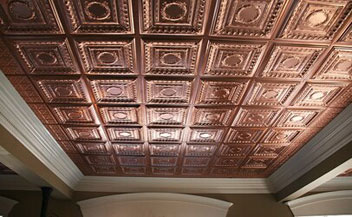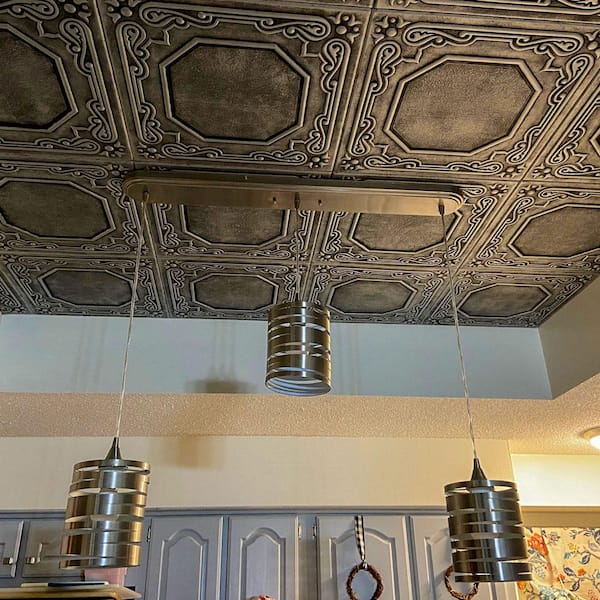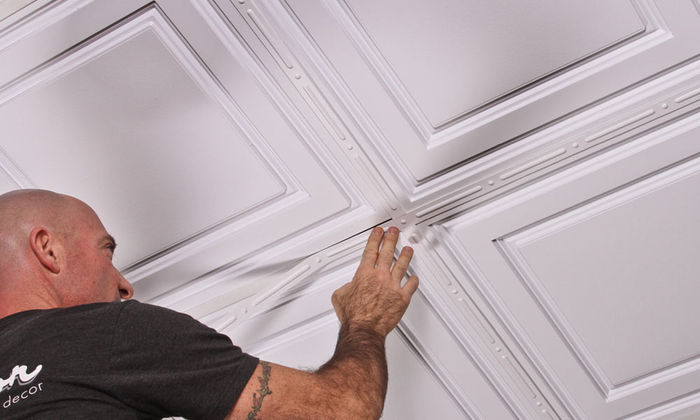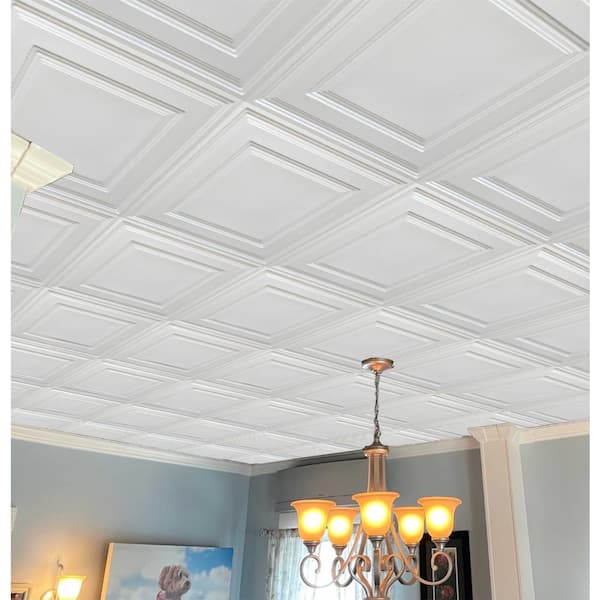As a longtime enthusiast of interior design, I’ve often found that the distinguishing feature of any room lies just above our heads: the ceiling. One of the most transformative yet often overlooked elements in home decor is decorative ceiling tiles. In this article, we’ll explore the various types of decorative ceiling tiles, their benefits, installation tips, and how they can enhance the aesthetic of your interiors.
What are Decorative Ceiling Tiles?
Decorative ceiling tiles are lightweight, easy-to-install materials used to beautify ceilings. They come in a variety of styles, designs, and materials, offering versatility in any space—from homes to commercial buildings. But why choose decorative ceiling tiles over traditional ceiling finishes? Let’s dive deeper.
Types of Decorative Ceiling Tiles
There is a multitude of decorative ceiling tiles available, each with its unique charm. Here’s a breakdown of some popular types:
| Type | Material | Design Options | Ideal Usage |
|---|---|---|---|
| Pressed Metal Tiles | Aluminum, Copper, or Tin | Intricate patterns, vintage | Restaurants, Cafés, and Vintage Homes |
| Styrofoam Tiles | Expanded Polystyrene | Various designs, paintable | Residential and Commercial Spaces |
| PVC Tiles | Polyvinyl Chloride | Modern designs, easy maintenance | Bathrooms, Kitchens |
| Wooden Tiles | Natural Wood | Rustic, contemporary finishes | Living Rooms, Offices, and Studios |
| Acoustic Tiles | Mineral Fiber | Sound-absorbing designs | Offices, Theaters, and Studios |
Benefits of Using Decorative Ceiling Tiles
Decorative ceiling tiles offer numerous advantages that can significantly improve your space:
- Enhanced Aesthetic Appeal: They can transform a bland ceiling into a stunning focal point.
- Sound Absorption: Acoustic tiles effectively minimize noise levels in busy spaces.
- Easy Installation: Many tiles come with DIY installation instructions, making it simple for any homeowner.
- Low Maintenance: Most decorative tiles are easy to clean and require little upkeep over time.
- Energy Efficiency: Certain tiles can help insulate a space, aiding temperature regulation.

Choosing the Right Decorative Ceiling Tiles for Your Space
With a wide variety of styles and materials available, choosing the right decorative ceiling tiles can be daunting. Here are some tips to guide your decision.
Consider Your Room’s Purpose
Different spaces have unique requirements. For example:
- Residential Areas: For living rooms and bedrooms, consider tiles that add warmth and character, such as wooden or pressed metal tiles.
- Commercial Spaces: Offices or restaurants might benefit from acoustic tiles to reduce noise or stylish PVC tiles for a modern look.
Match Your Design Style
Your ceiling tiles should complement your overall interior design scheme. Here’s a quick reference:
- Modern: PVC or sleek metal tiles.
- Rustic: Wooden tiles with natural finishes.
- Vintage: Pressed metal tiles with ornate patterns.
Evaluate Material Durability
Consider the location and the wear and tear the tiles may face. For example, tiles in a kitchen should be moisture-resistant, making PVC or painted Styrofoam a suitable choice.

Installation Process for Decorative Ceiling Tiles
One of the great aspects of decorative ceiling tiles is their ease of installation. Here’s a step-by-step guide to get you started:
Materials Needed
- Decorative ceiling tiles
- Measuring tape
- Utility knife
- Adhesive (recommended for the type of tile you choose)
- Level
- Safety goggles
- Drop cloths

Installation Steps
- Prepare Your Space: Clear the area and cover furniture with drop cloths.
- Measure and Plan: Measure your ceiling and create a layout plan for the tiles.
- Cut Tiles to Size: Use a utility knife for precise cuts according to your measurements.
- Apply Adhesive: Follow the manufacturer’s guidelines for the appropriate adhesive.
- Install Tiles: Press each tile firmly against the ceiling, ensuring they are level.
- Finish Edges: Use trim or molding to cover any gaps for a polished look.
DIY vs. Professional Installation
While many homeowners opt for the DIY route due to the manageable nature of the task, hiring a professional can ensure precision, especially for more complex designs. Here’s a brief comparison:

| Aspect | DIY Installation | Professional Installation |
|---|---|---|
| Cost | Lower initial cost | Higher upfront costs |
| Time | May take longer | Generally faster |
| Skill Level | No special skills required | Requires professional skills |
| Final Finish | Varies based on experience | Consistently high quality |
Pros and Cons of Decorative Ceiling Tiles
Like any home improvement option, decorative ceiling tiles come with their own set of advantages and disadvantages. Here’s an overview:

Pros
- Wide variety of designs and materials
- Improved aesthetics and ambiance
- Sound-absorbing capabilities
- DIY friendly installation
- Cost-effective in the long run
Cons
- Some materials may not be suitable for humid spaces
- Possible limitations in design continuity
- Initial costs can add up with extensive projects
- Requires effort in maintenance for certain materials

Maintenance Tips for Decorative Ceiling Tiles
To keep your decorative ceiling tiles looking fresh and new, here are some maintenance tips:
- Regular Dusting: Use a soft cloth or duster to remove dust buildup.
- Clean Spills Immediately: If the tiles get wet or stained, clean them promptly to prevent lasting damage.
- Inspect for Damage: Periodically check for signs of wear and tear, especially in high-traffic areas.
- Follow Manufacturer Guidelines: Always adhere to the care instructions specific to the tile material.
Frequently Asked Questions
What are the best materials for decorative ceiling tiles?
The best materials depend on your specific needs, but popular options include pressed metal for vintage aesthetics, PVC for modern designs, and Styrofoam for cost-effective solutions.
Can I install decorative ceiling tiles over old tiles?
Yes, in many cases, decorative tiles can be installed over existing tiles if they are in good condition. However, ensure that they are firmly adhered to the ceiling and evaluate the weight of the new tiles.
How do I remove and replace old ceiling tiles?
To remove old ceiling tiles, carefully pry them off using a flat tool. For replacement, clean the area before installing the new tiles with adhesive.
Conclusion
Decorative ceiling tiles are not just a design choice; they’re an opportunity to express your personal style and improve your living or working space. With their versatile applications, ease of installation, and aesthetic appeal, they’re an excellent investment for any interior. By understanding the different types, benefits, and maintenance needs, you’re well on your way to transforming any room from ordinary to extraordinary.
So, whether you’re redecorating your home, refreshing your office, or planning your next commercial space, consider the beauty and practicality of decorative ceiling tiles. Happy decorating!